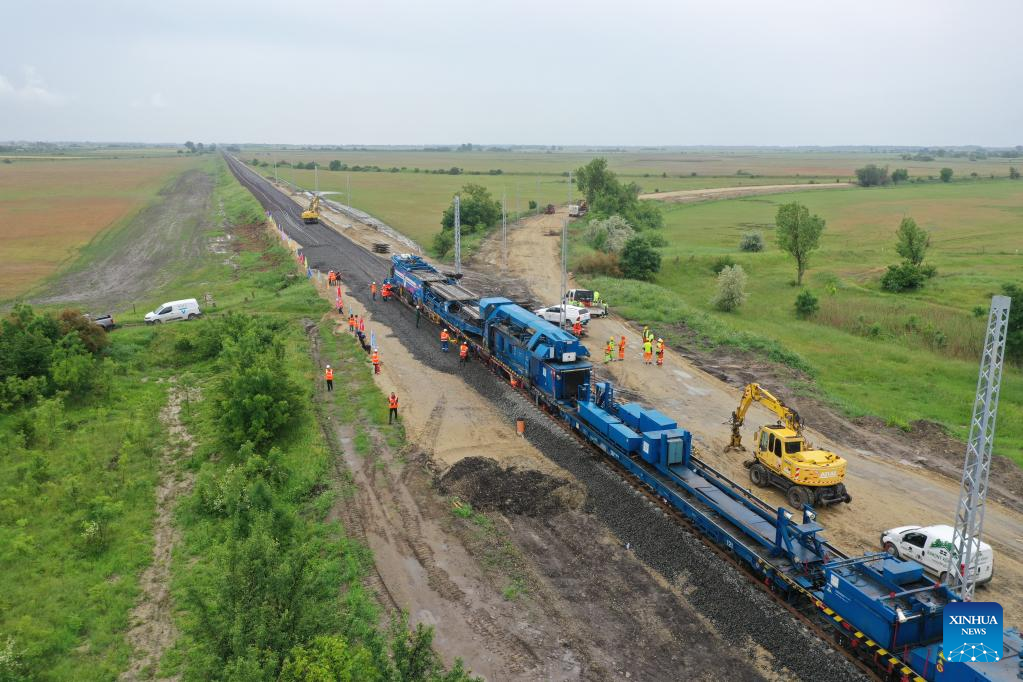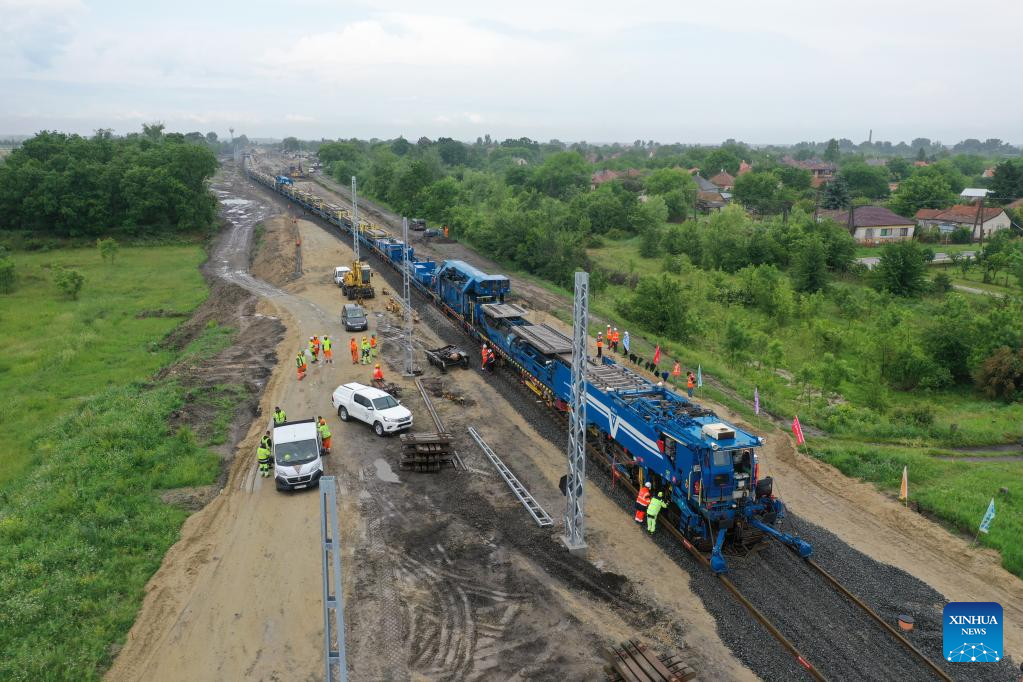Track laying starts on Chinese-built Hungarian section of Budapest-Belgrade railway
Issue Date:2023-06-01 Source:xinhua

Photo taken on May 30, 2023 shows the track laying at the construction site of the Budapest-Belgrade railway in Kunszentmiklos, Hungary. Against the backdrop of dark skies, pouring rain, thunder, and lightning, the arduous task of laying rails for the Chinese-built section in Hungary of the Budapest-Belgrade railway project got underway here on Tuesday, marking a significant milestone in the project. (China Railway Group Budapest-Belgrade Railway Management Dept.
Against the backdrop of dark skies, pouring rain, thunder, and lightning, the arduous task of laying rails for the Chinese-built section in Hungary of the Budapest-Belgrade railway project got underway here on Tuesday, marking a significant milestone in the project.
The 7.98-km Kunszentmiklos-Tass to Bosztor section is part of the 76 km railway line being built by Chinese companies in Hungary. China Railway No. 9 Bureau Group Co., Ltd. has undertaken the task of laying tracks, utilizing 120-meter-long steel rails.
The town of Kunszentmiklos, situated 54 km from the capital Budapest, hosts the largest station along the Chinese-built Hungarian section of the railway line. While the village of Bosztor, located 62 km from Budapest, will host a transfer station following its reconstruction.
Anticipated milestones for 2023 include the completion of track laying for the right line, foundation reconstruction of the left line, primary reconstruction of stations along the route, and bridge and culvert projects.
The 152-km Hungarian section of the Budapest-Belgrade railway line is being built by a consortium of China Railway No. 9 Bureau, China Railway Electrification Engineering Group Co., Ltd, and Hungarian partners.
Work on the Hungarian section commenced in July 2020 and entered the civil engineering construction phase in February 2022. The project is scheduled to be completed by July 2025.
The Budapest-Belgrade railway is one of the flagship projects of China's Belt and Road Initiative in this part of Europe. It is the result of the deepening of cooperation between China and the countries of Central and Eastern Europe. The project has received significant support from the governments of China and Hungary.
Financed by the Export-Import Bank of China, the railway line will span almost 350 km and will connect Budapest to Belgrade. Once completed and operational, travel time between the two cities will be reduced from 8 hours to approximately 3.5 hours.
